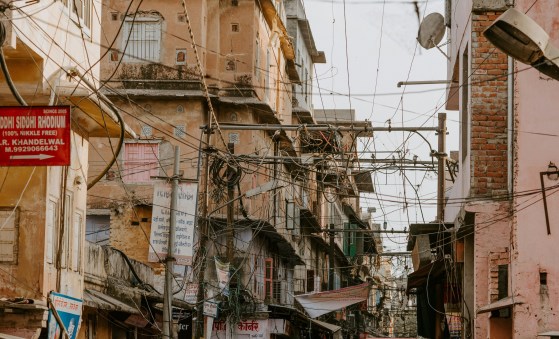Tens of thousands of Dalits and tribals have converted to Buddhism at a massive gathering in Mumbai to mark the 50th year of Dr. B.R. Ambedkar's conversion to the religion to escape the oppressive and stratified Hindu caste system.
Though the number of people present at Mahalaxmi Race Course was a little less than the expected figure of 100,000, it was definitely one of the biggest mass conversions in modern Indian history, one observer said.
In the past few years, thousands of Dalits and tribals have converted to Buddhism in different parts of the country, a move claimed by political analysts as an assertion of their identity that is influencing politics in a big way.
On May 27, at the crack of dawn, scores of buses loaded with Dalits and tribals plied into the grounds. Led by influential Dalit author Laxman Mane, men, women and children from 42 different castes sat patiently throughout the day waiting for their turn to be initiated into Buddhism. By evening, their number had swelled to at least 50,000, a witness to the event claimed.
Throughout the day, Buddhist leaders like Rahul Bodhi delivered inspirational speeches amid loud Buddhist chants and 'Jai Bhim' slogans, initiating thousands of new converts into the Buddhist fold.
The event, organized by Babasaheb Ambedkar Pratishthan, was just not a simple religious ceremony as it was also a show of strength by Maharashtra's Dalit leader, Ramdas Athawale, who time and again is at loggerheads with other leaders in the country to claim Ambedkar's true legacy.
Lok Sabha member and Republican Party of India president Athawale said the function was a dream come true for Ambedkar's followers.
"After the tremendous success of the Buddha 'dhamma deeksha' function on October 14, 1956, Ambedkar had planned a similar programme at Mumbai's Race Course grounds on December 16, 1956," Athawale said. Ambedkar died on December six and the function could not be held.
Tibetan spiritual leader Dalai Lama was scheduled to attend the function but could not make it due to health problems, a member of the organizing committee said.
Athawale gave a 22–point oath to the new converts to Buddhism. "I will not believe in Bramha Vishnu Mahesh, Ram and Krishna or any Hindu god," the oath read.
Although the Tibetan spiritual leader Dalai Lama, who was supposed to lead the "largest religious conversion in modern India," could not make it to the ceremony, there was a huge gathering of Buddhist monks in their maroon robes from different parts of India, as well as from other countries.
About Ambedkar:–
Born as an untouchable in 1891, Dr. Bhim Rao Ambedkar surmounted all sorts of socio–economic obstacles during his life to emerge as the champion of the downtrodden in Indian society, especially the untouchables also known as Dalits.
In 1924, he started the organization 'Bahiskrit Hitakarini Sabha,' for the upliftment of the untouchables and adopted a two–pronged strategy: – [1] Eradication of illiteracy and economic uplift of the downtrodden and [2] Non–violent struggle against visible symbols of casteism, like denial of entry into temples and drawing water from public wells and tanks.
In 1942, Dr. Ambedkar formed the 'Scheduled Castes Federation.' He was also a staunch advocate of women's rights. Justifiably bitter and disenchanted with Hinduism, he changed his religion to Buddhism.
In October 1956, Dr. Ambedkar, along with about a quarter million Dalit men and women, converted to Buddhism in Nagpur. For Ambedkar, Buddha was one of the main inspiring personalities in history who raised a strong voice of protest against inequality between people and between men and women.
Dr. Ambedkar died on December 6, 1956, and Dalits continue to remember him as their liberator and a champion of their rights.
Low–caste Hindus make up about 16 percent of India's 1.1 billion population, and have traditionally been at the bottom of the 3,000–year–old Hindu caste hierarchy.
In some parts of the country, including in its most populous state of Uttar Pradesh, the community has been mobilized by low–caste politicians into a potent political force but even there they continue to face widespread discrimination.
Caste discrimination is banned by the Indian Constitution but reports of Dalits being beaten or killed for using a well or worshipping at a temple reserved for upper castes in the conservative rural areas are still common.




